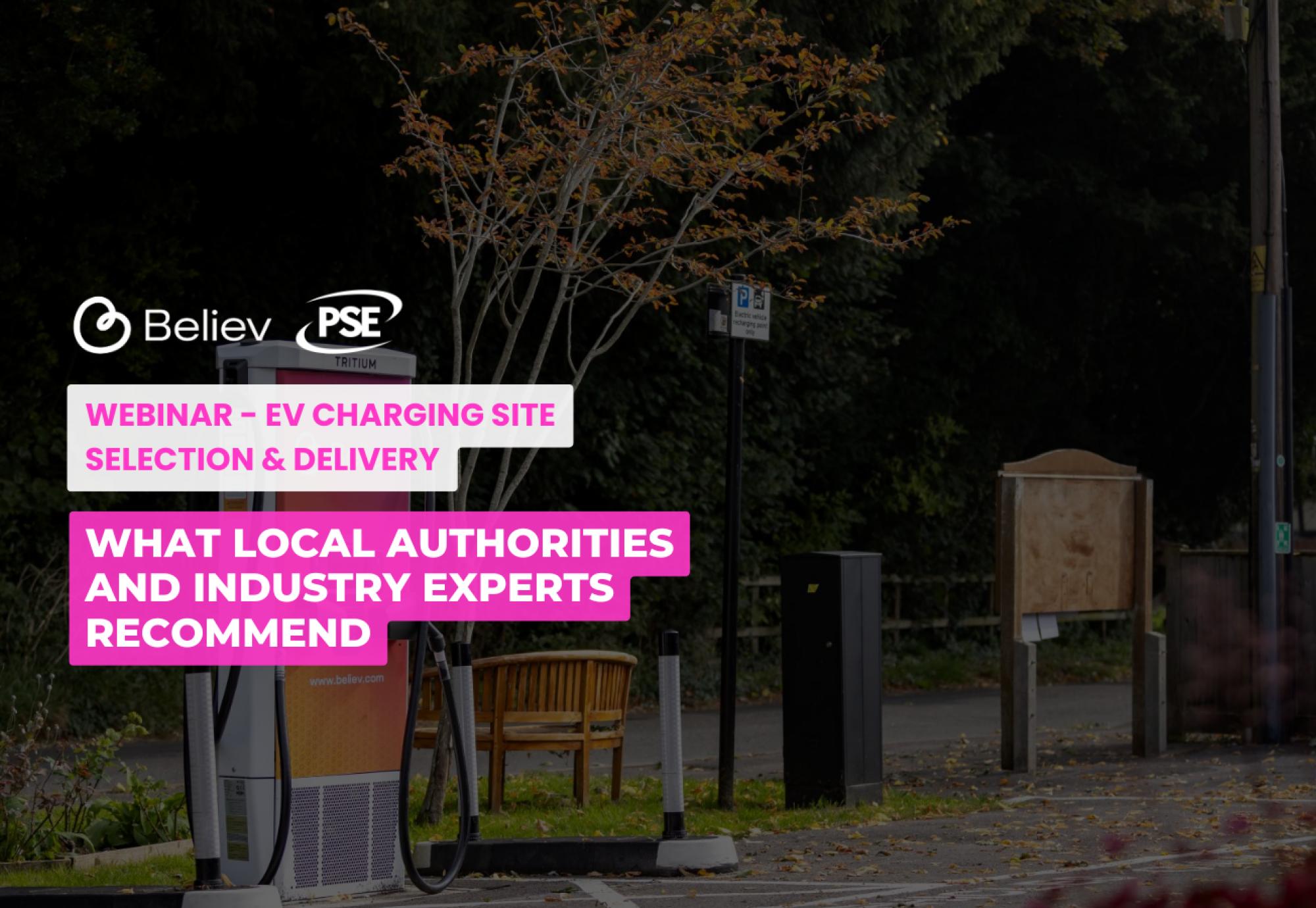In the rapidly evolving world of electric vehicles (EVs), the importance of efficient site selection for charging infrastructure cannot be overstated.
In our latest webinar we delved into the intricacies of this process with experts from Believe, Senex, and the British Parking Association (BPA). David Bagwell, host and senior business development manager for Believe, led a panel discussion featuring Ed Faldo and Osman Kara.
Together, they explore the multifaceted approach required to identify suitable locations for EV charging stations that not only meet demand but also ensure accessibility for all community members. One of the key topics discussed is the role of digital tools in streamlining the site selection process. Osman Kara highlighted how these tools can significantly reduce planning time by providing data-driven insights into demand zones, household connectivity, and other vital metrics. This shift towards data-centric decision-making allows local authorities to make informed choices about where to install charging points, ultimately enhancing the user experience.
Accessibility is another critical theme. It was emphasised that it's not enough to simply install chargers; they must be placed in locations that are easily accessible to all, particularly for disabled drivers. The panel discussed the PAS 1899 standards, which set a benchmark for the accessibility of public charging points, and the importance of engaging with local communities to ensure their needs are met.
The discussion also addressed the challenges of community engagement. Ed Faldo shares his experiences in working with local authorities to foster positive relationships with residents, ensuring that they feel included in the decision-making process. This engagement is vital in mitigating potential backlash and promoting the acceptance of new charging infrastructure. As the conversation unfolded, the panelists provided valuable insights into the physical considerations that must be taken into account during site selection. From assessing footpath widths to understanding local power availability, these factors play a crucial role in determining the feasibility of a charging location.
In conclusion, this event serves as a comprehensive guide for anyone involved in the EV charging landscape, from local authorities to charge point operators. By leveraging digital tools, prioritising accessibility, and engaging with communities, we can pave the way for a more sustainable and inclusive future for electric vehicle charging.
You watch the webinar on demand here.



















